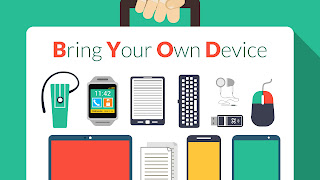Twitter Feed
Cloud Services Brokerage: Adding Trust and Oversight to Complex Cloud Deals
According to the Gartner IT Glossary, “Cloud services brokerage (CSB) is an IT role and business model in which a company or other entity adds value to one or more…
Learn Hadoop and Big Data in 7 Minute Flat!
How do I install Hadoop, and on what platforms? What are the differences between versions of Hadoop? How do I Extract, Transform and Load in Hadoop? The answers to these…
Tech Equity & GovCloud Network Team For Cloud Education
GovCloud Network is proud to announce that we have teamed with Tech Equity Ltd to deliver cloud education and training on a global basis. With this partnership, GovCloud Network will…
National Cybersecurity = Cloud Computing Security
A recent article Inc.com article claimed that the percentage of U.S. small businesses using cloud computing is expected to more than double during the next six years, from 37 percent…
Vets 360 Sponsoring Service Members To Attend Gartner Catalyst Conference
Veterans 360 will be attending the Gartner Catalyst Conference. They are also sponsoring the attendance of active duty service members that are currently in the US military and serving in…
ERPGovCloud: Your Path to DCAA Compliance
So you won your first Government Contract… Congratulations! Among the new issues you will need to consider, your accounting systems, both practices and technology, will need to pass muster with…
GovCloud Media Network Feature: Army IT Playlist
The GovCloud Media Network features agency specific video playlist for registered members. Please enjoy this feature on the Army IT. Please visit the new GovCloud Network Media Library for more…
Security & Defense People Launches – Use “GovCloud” for 50% Discount
This is quite an unusual post for me but I would like to congratulate GovCloud Network partner SDP Networks on their launch of the Security & Defense People website! Security…
The Cloud Credential Council releases Executive FedRAMP certification course with leading government cloud expert Kevin L. Jackson.
Palo Alto, USA – June 23rd, 2014 – Addressing the global cloud skills gap is the number one priority to help accelerate the successful adoption of Cloud, according to the Cloud…
Learning Tree’s Expert Cloud Instructor Kevin Jackson Announces Multiple Speaking Engagements
(Reposted from LearningTree’s “Perspectives on Cloud Computing” at https://cloud-computing.learningtree.com/2014/06/12/expert-learning-tree-cloud-instructor-kevin-jackson-announces-multiple-speaking-engagements ) Kevin Jackson, a certified Learning Tree cloud computing instructor and Learning Tree Cloud Computing Curriculum Initiative Manager, is set to…
- Increased employee mobility (63%), satisfaction (56%) and productivity (55%) dominate as the top drivers of BYOD. These employee related drivers are considered more important than reduced costs (47%).
- Security (39%) and employee privacy (12%) are the biggest inhibitors of BYOD adoption.
- 20% of surveyed organizations have suffered a mobile security breach, primarily driven by malware and malicious WiFi.
- Security threats to BYOD impose heavy burdens on organizations’ IT resources (35%) and help desk workloads (27%).
- Despite increasing mobile security threats, data breaches and new regulations, only 30% of organizations are increasing security budgets for BYOD in the next 12 months and 37% have no plans to change their security budgets.
- 72% – Data leakage/loss
- 56% – Unauthorized access to company data and systems
- 54% – Downloading of unsafe apps or content
- 52% – Malware
- 50% – Lost or stolen devices
- 49% – Vulnerability exploitation
- 48% – Lack of control on endpoint security
- 39% – Infrequent software updates
- 38% – Compliance
1. Create your policy before procuring technology: To effectively use mobile device management (MDM) technology for employee owned devices Policy must precede technology. Also note that these policies will have broad corporate-wide implications for IT, HR, legal, and security.
- Mobile device management
- Application security assessments
- Application testing services
- Application source code security assessments; and
- Embedded device security.
This post was brought to you by IBM Global Technology Services. For more content like this, visit ITBizAdvisor.com.
( Thank you. If you enjoyed this article, get free updates by email or RSS – © Copyright Kevin L. Jackson 2017)
Cloud Computing
- CPUcoin Expands CPU/GPU Power Sharing with Cudo Ventures Enterprise Network Partnership
- CPUcoin Expands CPU/GPU Power Sharing with Cudo Ventures Enterprise Network Partnership
- Route1 Announces Q2 2019 Financial Results
- CPUcoin Expands CPU/GPU Power Sharing with Cudo Ventures Enterprise Network Partnership
- ChannelAdvisor to Present at the D.A. Davidson 18th Annual Technology Conference
Cybersecurity
- Route1 Announces Q2 2019 Financial Results
- FIRST US BANCSHARES, INC. DECLARES CASH DIVIDEND
- Business Continuity Management Planning Solution Market is Expected to Grow ~ US$ 1.6 Bn by the end of 2029 - PMR
- Atos delivers Quantum-Learning-as-a-Service to Xofia to enable artificial intelligence solutions
- New Ares IoT Botnet discovered on Android OS based Set-Top Boxes


